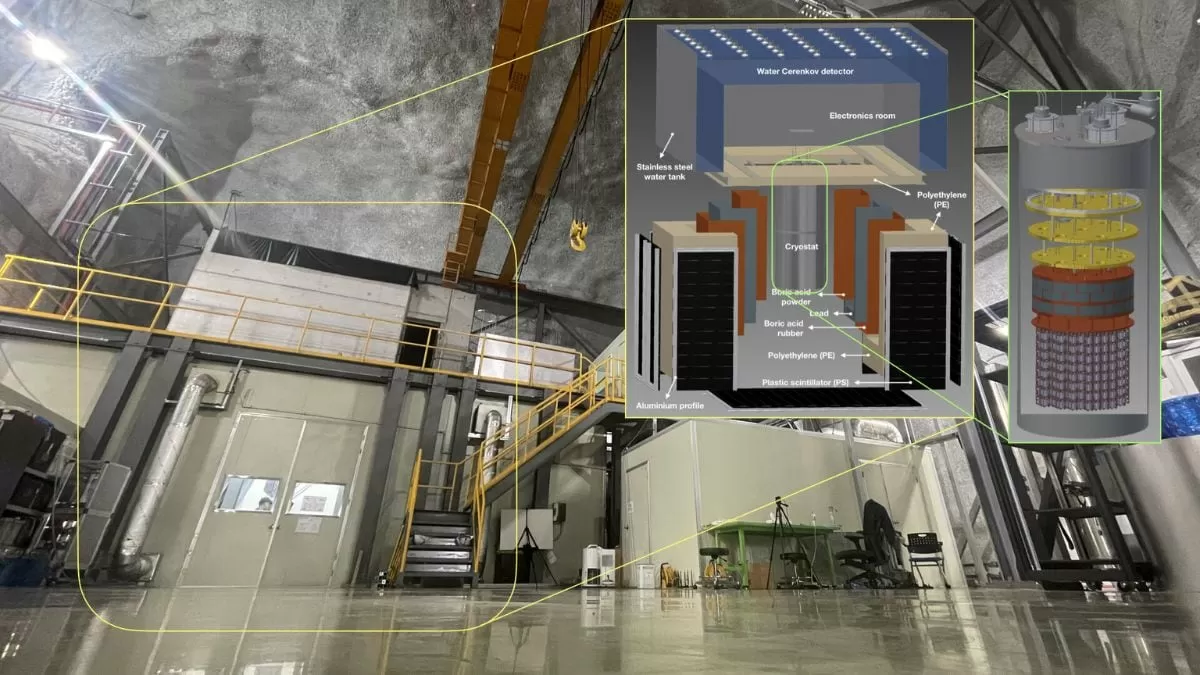The search for neutrinoless double beta decay has been a long-standing quest in the field of nuclear physics. This rare nuclear process, if observed, could provide crucial insights into the fundamental properties of neutrinos and the nature of matter itself. In recent years, the AMoRE (Advanced Mo-based Rare process Experiment) collaboration has been at the forefront of this research, making significant progress in refining the limits of neutrinoless double beta decay using molybdenum-100.
The AMoRE experiment, which is based at the Yangyang Underground Laboratory (Yemilab) in South Korea, aims to detect the elusive neutrinoless double beta decay by using a large array of molybdenum-based crystals. These crystals are highly sensitive to the decay process and can provide valuable information about the properties of neutrinos. The first phase of the experiment, AMoRE-I, was successfully completed in 2017 and set a new upper limit on the decay half-life of molybdenum-100.
The results from AMoRE-I were a significant achievement for the collaboration, as they provided the most stringent constraints on the decay half-life of molybdenum-100 to date. However, no clear signal of neutrinoless double beta decay was observed, indicating that the decay process is even rarer than previously thought. This result has motivated the AMoRE collaboration to push the boundaries further and continue their search for this elusive process.
The next phase of the experiment, AMoRE-II, is currently being developed at Yemilab with enhanced detection systems to further explore the rare nuclear process. The new setup will consist of an array of 2000 molybdenum-based crystals, which is a significant increase from the 400 crystals used in AMoRE-I. This increase in the number of crystals will significantly improve the sensitivity of the experiment, allowing for a more precise measurement of the decay half-life of molybdenum-100.
One of the key improvements in AMoRE-II is the use of enriched molybdenum-100 crystals, which will increase the chances of detecting the decay process. These crystals are produced by the Institute for Basic Science (IBS) in South Korea, using a state-of-the-art enrichment facility. The enriched crystals will be carefully selected and tested to ensure their high purity and quality, making them ideal for the AMoRE-II experiment.
In addition to the increased number of crystals, the AMoRE-II experiment will also feature improved background rejection techniques and advanced data analysis methods. These enhancements will help to reduce the background noise and improve the signal-to-noise ratio, making it easier to detect the rare decay process.
The AMoRE collaboration is confident that the new setup will provide valuable insights into the nature of neutrinos and the process of neutrinoless double beta decay. The experiment is expected to run for five years, and the data collected will be carefully analyzed to search for any signs of the decay process. If successful, the results from AMoRE-II could have a significant impact on our understanding of the universe and the fundamental laws of physics.
The AMoRE collaboration is a testament to the power of international cooperation in scientific research. The project brings together scientists from various countries, including South Korea, Russia, the United States, and the Czech Republic, to work towards a common goal. The collaboration also provides valuable training opportunities for young researchers, who are gaining hands-on experience in cutting-edge experimental techniques.
In conclusion, the AMoRE experiment has made significant progress in refining the limits of neutrinoless double beta decay using molybdenum-100. The results from the first phase of the experiment, AMoRE-I, have set a new upper limit on the decay half-life, and the next phase, AMoRE-II, is currently being developed with enhanced detection systems. The collaboration is determined to continue their search for this rare nuclear process and hopes to shed light on the mysteries of the universe. With the advancements in technology and the dedication of the scientific community, we are one step closer to unraveling the secrets of the universe.

